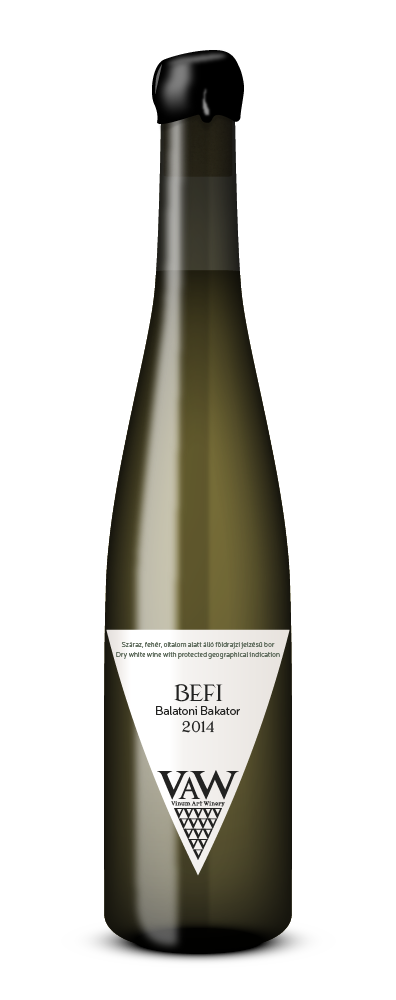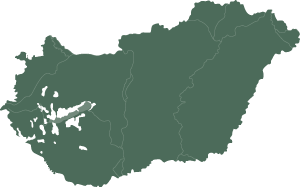Personal opinion:
Elegant, exciting, assertive, and really authentic wine. I would add that it is my personal favourite in Badacsony. Its unique, not intrusive but still firm aroma is rounded off by a slightly spicy bouquet and a mineralized nature characteristic of the basalt soil. It is the centre of the crowd, a unisex wine.
Gastronomical pairing:
I made steak tartare with toast and garlic butter to accompany it. It is a dish that is easy to handle even for a bigger crowd.
About the Bakator variety:
At one time it was a widespread vine variety in the wine regions of the entire Carpathian Basin. Nowadays more and more of us believe that ignoring it was a mistake. The Bakator or Red Bakator is an ancient Hungarian variety belonging to the wine-producing vines (Vitis vinifera) of the Vitaceae family. There are only a few stalks left. Its yield is medium. It only yields good quality of the circumstances are favourable. Its wine is a fine, aromatic, full-bodied table wine. It only ripens by mid-October. Its setting is often not satisfactory. It requires good soil and a warm, sheltered location. Its better known names are Bakator, Red Bakar and Ménesi Rózsás. Among its many varieties there are white, black, green, yellow, pink and garnet-red Bakators.
It does not have a connected production site, it is rather found dispersedly. It is also grown in the Neszmély wine region and in the Nyírség besides the Balaton area. It is a famous variety of the Arad-hegyalja wine region on the territory of the pre-Trianon Hungary. Its stock is of strong growth. Its canes are thick, have long merithallus, they are brownish red and striped. Its sprouts are medium-sized, pointed, projected and slightly fleecy. Its vexil is felty, with a slightly bronze running, and is yellow. Its leaf is large, roundish and has five lobes. Its upper lateral sinus are deep, roundish, closed. Its petiolar sinus is most of the times closed. Its sprout is outstandingly striped in purplish colour. Its flowers are functionally female flowers, and fructify badly. Its cluster is medium-sized, short and thick-set, branchy, irregular-shaped, medium-packed or loose. Its berries are medium-sized, round, thick-skinned, flesh-red, dotted, juicy and have a rather pleasant aroma.
The region and its history:
In the Badacsony area, vines were grown in Roman times, and Emperor Probus had sizeable plantings here. At the time of the settlement of the Magyars in Hungary they already knew about vines and wine. They appreciated areas capable of growing vine. A significant part of the wine region was taken over by the church in the 13th century. In the 18th-19th century the Badacsony vermouth gained a similar reputation to that of the Tokaj aszú in Europe.
During the reconstruction after the phylloxera epidemic, supporting walls were built to prevent soil erosion. New varieties also entered the area. The Szürkebarát was introduced from France by monks. Due to the special soil content it evolved into a typical local variety, the Szürkebarát, which botrytises in good years.
The variety grown in the biggest amount is Olaszrizling that is in better years ripened on the stock longer, and is used to make ice wine or late-harvest hand-selected Olaszrizling. Szürkebarát, Tramini, Sárga muskotály, Rajnai rizling and Chardonnay are also present on the larger lands.
Kéknyelű or " Blue Stem" used to be a characteristic wine of the region. It was significantly confined by the frost damage of the 1980's but is experiencing a revival today, and will be an emblematic wine of the Badacsony region again in the near future.
Badacsony wines are typically full-bodied, fiery, aromatic and mineralized. Traditional wine-making and maturation in wooden barrels are characteristic. Although reductive wine-making and other modern technologies are also spreading, they have not significantly changed the character of the region's wine, yet.
Climate and geography:
Badacsony is the highest mountain in the Tapolca Basin; it stands between two bays of Lake Balaton. The circumference of the almost round mountain is 11km, the diametre of its top region slightly elongated in the north-south direction is 1-1.5km, its highest point is 437.4 metres above sea level. Its hillside is covered up to 280 metres by various loose deposits that are excellent for growing vine, and its soil is basalt-based loess. It is covered by various loose deposit, Pannon clay and Pannon loess, above which there are basalt rocks. Its climate is mild and balanced with high humidity. Because of the proximity of Lake Balaton the southern hills can also enjoy the sunshine reflected from the surface of the water, therefore there is a very beneficial microclimate that makes the making of natural dessert wine possible.
The wine region includes the vine cadastre-based first and second class border sections of the following settlements: Ábrahámhegy, Badacsonytomaj, Badacsonytördemic, Balatonrendes, Balatonszepezd, Diszel, Gyulakeszi, Hegymagas, Káptalantóti, Kisapáti, Kővágóörs, Nemesgulács, Raposka, Révfülöp, Salföld, Szigliget, Tapolca.
NAME: BEFI
YEAR: 2014
VARIETY: Bakator
WINE REGION: Badacsony
CLASS: Dry white wine with protected geographical indication
Product of Hungary
Bottle volume: 750ml
Alc. 12,5%vol
Contains sulphites


